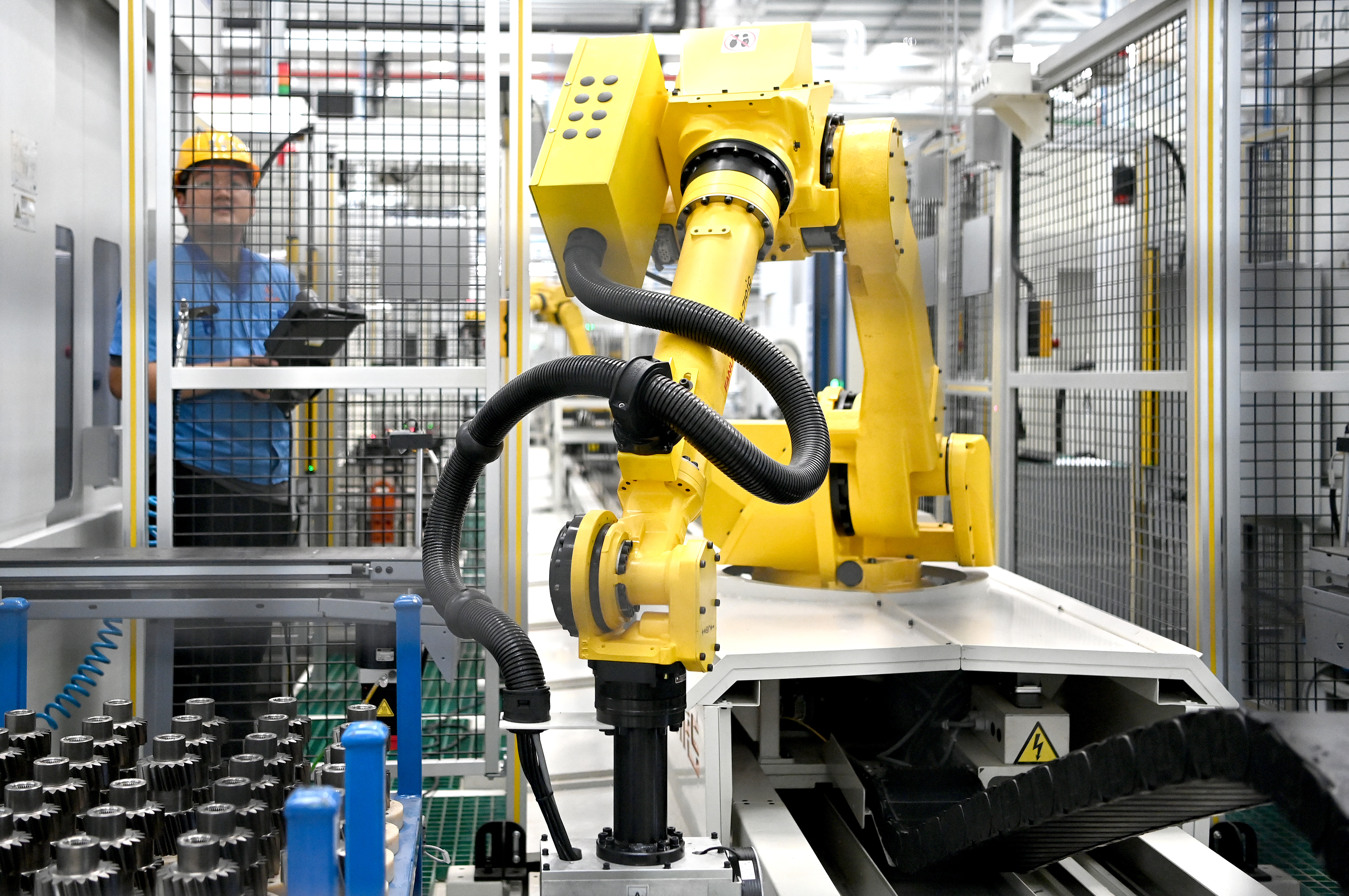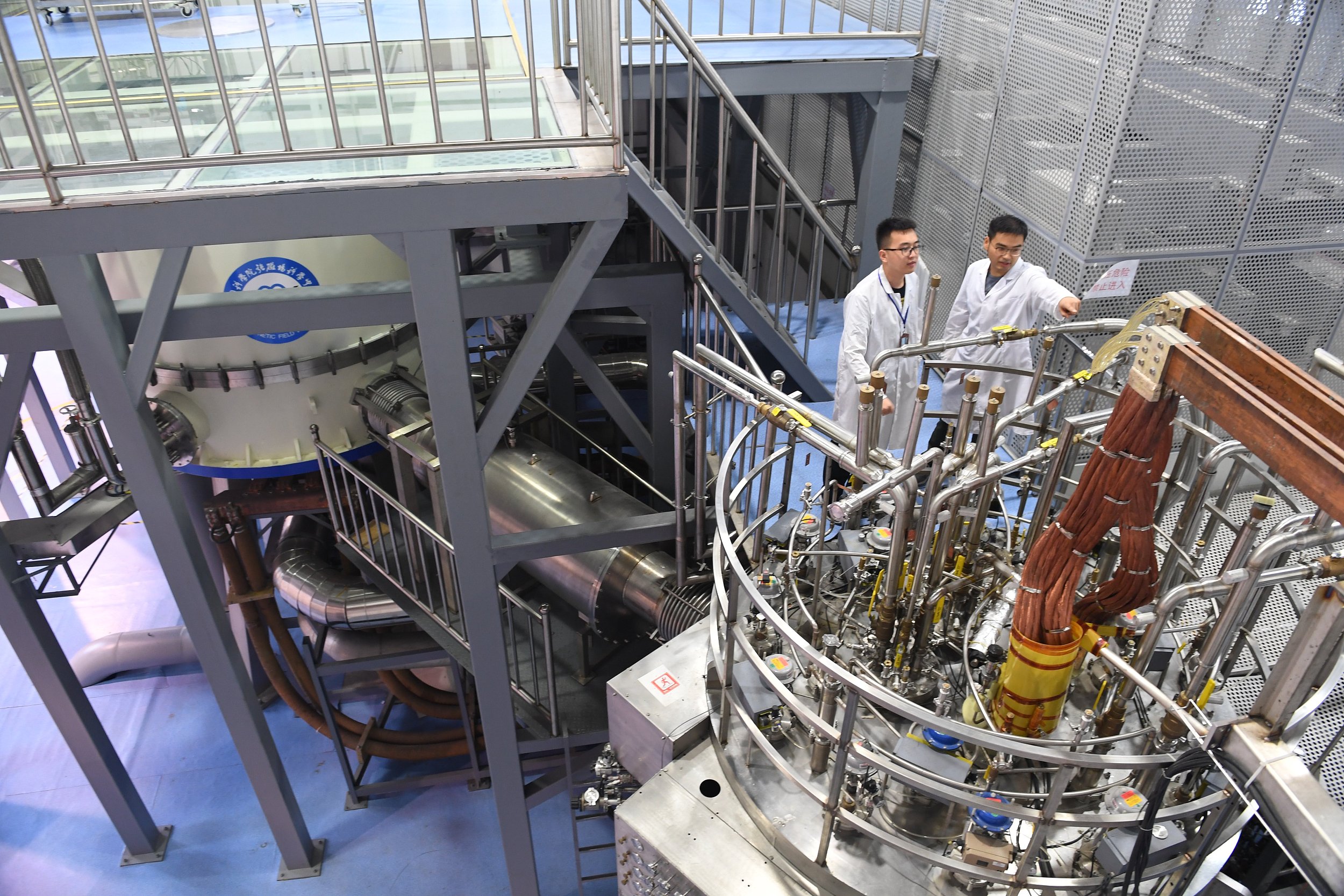A Decade of Glory: China's Industrial Development
The digital production line of transmission parts of vehicles in a smart factory in northwest China's Shaanxi province. (PHOTO: XINHUA)
By LU Zijian
With an average annual growth rate of 6.3 percent, China's industrial added value soared from 20.9 trillion RMB to 37.3 trillion RMB from 2012 to 2021, said Xin Guobin, vice minister of industry and information technology at a press conference on June 14.
The added value of the country's manufacturing industry also saw a big leap from 16.98 trillion RMB to 31.4 trillion RMB, with its proportion in the world rising from 20 percent to nearly 30 percent.
Meanwhile, apart from these impressive figures, these are great industrial achievements made over the past decade.
Greener industries
Apart from lifting the added value of industries, China has also been committed to green industrial development for the past decade, especially the reduction of energy consumption and carbon emissions.
Central China's Hunan province, for example, has witnessed a drop of 27 percent in the energy consumption per 10,000 RMB of value-added by industrial enterprises above designated size since 2016. This means there were six million tons more of reduced carbon emissions than that of the previous year, on average during this period of time. The accumulated reduced carbon emissions for the past five years reached around 9,000 tons, equaling the carbon sink capability of 50,000 hectares of forest.
Green manufacturing has been implemented with the construction of a series of green factories, green industrial parks and green supply chain management enterprises.
In a cloth dyeing factory in Changzhou, east China's Jiangsu province, new equipment was adopted to atomize dye liquor by high-pressured air before it touches the cloth. "This new machine greatly reduced energy consumption, which was very high in traditional dyeing. With this new technology, the factory could save 200,000 tons of water and three million kWh of electricity per year," said Wang Cunshan, president of the factory.
Recycling of resources has also played an important role. In 2020, the comprehensive utility rate of general industrial solid waste reached 55.4 percent and the quantity of recycled and utilized renewable resources was about 380 million tons.
More intelligent
Digitalization has also made industries more intelligent, with industrial Internet and intelligent manufacturing as the most obvious manifestation.
At an intelligent factory in Hangzhou, east China's Zhejiang province, all 284 facilities operate automatically based on 5G+industrial Internet, said a person in charge of the factory, adding that the operation cost dropped by 15 percent and the yield rate increased to 99 percent.
According to Han Xia, chief engineer of the Ministry of Industry and Information Technology (MIIT), industrial Internet has been applied to 45 categories of the national economy. The five national top-level nodes of industrial Internet now operate stably, and secondary nodes basically cover all provinces. More than 150 large industrial Internet platforms have been cultivated, and over 78 million pieces of industrial equipment have been connected within industrial Internet.
China also issued 42 international standards and over 300 national standards for intelligent manufacturing. For the pilot demonstration projects of intelligent manufacturing, the production efficiency increased by 48 percent on average, the product lead time shortened by 38 percent and the defective rate of products dropped by 35 percent. The intelligent manufacturing in refining and chemicals, printing and dyeing, and home appliances in China has reached a world-leading level.
SRDI for the future
The rise of specialized, refined, differential and innovative (SRDI) enterprises have been a distinctive feature in the development of SMEs in China.
Xu Xiaolan, vice minister of industry and information technology, said SRDI enterprises have strong capabilities of innovation and good growth, and play an inevitable role in strengthening, supplementing and stabilizing industrial chains.
Leading SRDI enterprises are nicknamed "little giant" enterprises, over 60 percent of which are in the basic fields of industry, over 70 percent deep diving more than ten years in their relevant industry and over 80 percent entering a strategic emerging industrial chain. The average R&D investment ratio of SRDI enterprises reached 10.3 percent, 1.8 percent higher than that of listed companies.
As a "little giant" enterprise, a soft robot company in Beijing Economic-Technological Development Area developed a kind of flexible gripper, which is accurate and controllable like a human hand when it is used in delicate operations like gripping a cell phone screen. The product has been sold to 23 countries and applied in industries like semicondutors, auto parts, medical instruments and fresh food.
China has spared no effort to support the development of SMEs. The Beijing Stock Exchange, opened last year, aims to offer financial support for SMEs and push for innovation-driven development. At a conference, Xu said that MIIT will help SMEs to pull through in every possible way and support them in enhancing their innovative capabilities and levels of expertise.
The industrial achievements of the past decade has laid a good foundation for future development of China's industry, and the country is ready to take the next step up.



